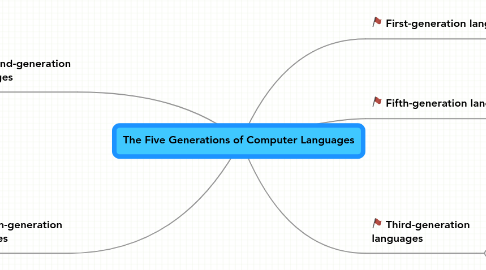The Five Generations of Computer Languages
von Emmy chotalal

1. Second-generation languages
1.1. Also reffered to as assembly languages, were hailed as a significant improvement over machine languages.
1.2. Like a machine language, an assembly language is classified as a low-level language because it is machine specific-each assembly command corresponds on a one-to-one basis to a machine language instruction.
2. Fourth-generation languages
2.1. In 1969,computer scientist began to develop high-level languages, which were called fourth-generation languages.
2.2. Fourth generation, such as SQL and RPG, eliminate many of the strict punctuation and grammar rules that complicate third-generation languages.
3. First-generation languages
3.1. Also referred to as machine languages.First generation were the first languages available for programming computers.
3.2. Machine languages consist of a set of commands , which are represented as a series of 1s and 0s,corresponding to the instruction set that is hard wired into the security of a micro processor.
4. Third-generation languages
4.1. High level languages that were originally conceived in the 1950s were dubbed third-generation languages because they seemed a mojor improvement a major improvement over machine and assembly languages.
4.2. Third-generation languages, such as COBOL and Fortan, were used extensivelyfor buisness and scientific applications.
5. Fifth-generation languages
5.1. Prolog and other declarative languages became closely identified with the fith-generation project and were classified by some experts as fith-generation projects.
5.2. In 1982, a group of Japanease researchers began work on a fith-generation computer project that used Prolog.


